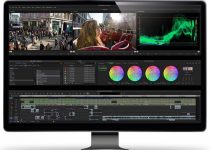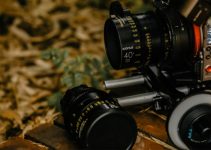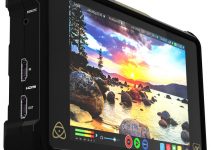There’s no surprise that Sony continues to receive a tremendous amount of praise with their filmmaker-oriented A7III. With the release of Canon’s very first full-frame mirrorless camera the EOS R, however, many content creators are now pondering which one of the two rivals would suit their creative workflow better.
To answer this question, Dave Altizer from Kinotika puts the Canon EOS R against the Sony’s rival in a head-to-head comparison, all to determine which camera would be the better fit when it comes to filmmaking applications.
Regarding image quality, it’s safe to say that the A7III can produce better-looking images right off the bat. At 1080p, the video is sharp, but you’ll start noticing some moiré artifacts, especially if you look closely at certain areas of the image. The same applies to the EOS R alongside the slightly softer image captured while shooting at the same resolution.
Switching over to 4K, the A7III still leads in terms of video quality while utilizing the entire size of the sensor whereas the EOS R is forced to crop with a factor of 1.75x resulting in slightly less image detail.
Even though Sony may outperform Canon when it comes to image detail, Canon still reigns supreme in regards to color fidelity. Despite the fact that the A7III possesses an improved color science, the EOS R produces richer, more accurate colors with natural-looking skin tones, according to Altizer.
In terms of autofocus capabilities, there isn’t much to talk about as both Sony and Canon stay at the top of their game with some of the best autofocus technology currently available out there. Each contender was able to properly track moving subjects without any problems while shooting.
Looking at how each camera is affected by rolling shutter, the A7III seems to perform slightly better than the EOS R. While the A7III clearly shows signs of rolling shutter artifacts when shooting at 4K, the EOS R’s skewed vertical lines look significantly worse, both in 1080p and 4K.
Slow motion videographers will be happy to know that the Sony A7III can shoot both 60 and 120 fps at 1080p, allowing you to capture and slow down the action while retaining details with high precision.
Unfortunately, the Canon EOS R doesn’t fair well in this regard. While the camera can shoot at 60 fps at 1080p with autofocus tracking enabled, it is limited to 720p and manual autofocus only when shooting at 120fps which could be a major drawback for some shooters.
In terms of image stabilization, both mirrorless cameras have their own implementations. The A7III sports in-body image stabilization (IBIS), which when paired with a compatible Sony lens, can yield some stunning results in an attempt to get the steadiest shots possible.
On the other hand, the EOS R doesn’t feature built-in image stabilization. However, Canon’s new lenses for the EOS R support image stabilization (Lens IS). Although the Lens IS capabilities doesn’t quite match the IBIS/Lens IS technology of Sony, it’s better than not having any image stabilization at all.
Last but not least, Altizer used both cameras in a vlog-style setup while holding the body with his hands and having the unit pointed directly at him. Apparently, it was much easier to vlog with the EOS R thanks to its flip-out LCD screen. In addition, the Lens IS surprisingly helped keep the video stable along the way.
Speaking of the A7III, it would be more challenging to work within a vlog-style shooting situation since there is no way to view your shots unless you use an external monitor as an extra add-on.
So, between the two cameras, the A7III seems to be the better fit when it comes to video shooting. As valent as Canon’s effort is for trying to break into the mirrorless market, there are some essential features missing from the EOS R that make it difficult for filmmakers to use. The inclusion of built-in image stabilization and some additional 1080p and 4K video recording options definitely won’t heart.
While the A7III remains a frontrunner in the mirrorless camera market, it will be exciting to see what Canon has up their sleeves with the next iterations of their full frame mirrorless cameras. Meanwhile, let us know in the comments which one of the two rivals do you like more.
[source: Kinotika]
Order Links:
Canon EOS R Mirrorless Digital Camera (B&H, Amazon)
Sony Alpha a7 III Mirrorless Digital Camera (B&H, Amazon)
Disclaimer: As an Amazon Associate partner and participant in B&H and Adorama Affiliate programmes, we earn a small comission from each purchase made through the affiliate links listed above at no additional cost to you.
Claim your copy of DAVINCI RESOLVE - SIMPLIFIED COURSE. Get Instant Access!





